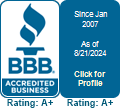Last year during a Senate Appropriations transportation subcommittee hearing, Transportation Secretary Anthony Foxx stated a rule proposal requiring that heavy duty trucks be equipped with speed limiters would be forthcoming in Fall of 2015. Given recent concern about the delay in this rulemaking, Secretary Foxx has now stated that the rule proposal is scheduled to be completed NLT April 22.
This proposed rule is the result of a collaborative effort between the DOT’s National Highway Traffic Safety Administration (NHTSA) and Federal Motor Carrier Safety Administration (FMCSA). Its purpose is to limit the speed of heavy duty trucks in hopes of reducing highway fatalities. According to the DOT, this rule would require speed limiting equipment to be installed on all trucks weighing over 27,000 pounds. The proposal has been stalled as the NHTSA and FMCSA have been working on aspects of the rule with the White House’s Office of Management and Budget (OMB) since May of last year.
Once the rule is approved by the OMB, it will be published in the Federal Register and will be open for public comment for 60 days. After that, the two DOT agencies that created the rule will draft a Final Rule which will go through the same review process without a public comment period. This rule would more than likely go into effect in two years. Given the positive safety implications, many are hoping for rule publication in the very near future.
Verbiage contained within the spending bill signed by President Obama in December may render the current hours of service law invalid. The bill was supposed to merely reverse the earlier provision that overnight drivers take at least two half-hour breaks between the hours of 1 a.m. and 5 p.m. However, the spending bill’s Section 133 failed to specifically state that the old hours of service restart rules would continue to apply if studies by the Virginia Tech Transportation Institute fail to indicate that a lack of driver breaks impacts safety.
Lobbyists worry that the bill’s verbiage could potentially spell the end of the hours of service law. Furthermore, the American Trucking Associations (ATA) fears that the new law could end up forcing work limits back to 60 hours per seven-day week and 70 hours in an eight-day consecutive span. According to logisticsmgmt.com, the ATA has tried to address this problem by inserting “corrective” language in must-pass legislation that authorizes short-term funding for the Federal Aviation Administration. The DOT has also promised assistance as required. Fortunately, other pieces of legislation are under consideration to address the problem as well. Trucking lobbyists say they will back whichever one has the best chance of passage.
It is important for shippers to stay abreast of changes to this situation, as shortened hours may impact delivery times and cause pickup delays, resulting in unhappy customers and inventory shortages. Furthermore, these delays may result in the need for shippers to schedule more expedited shipments, which can become costly. AMTR’s ‘Smart’ Auditors will keep you updated on freight legislation and ensure that, if these delays occur, they will not affect your freight spend.
Our agricultural clients ship a multitude of commodities produced from the humble corn plant, not the least of which is the fuel additive ethanol. With the growth of the ethanol industry, rail freight traffic of this valuable commodity has increased dramatically over the last few years, accounting for 60 – 70% of all ethanol transport. With markets for ethanol spread from the East Coast to the West Coast, most receive their product via Class I railroads. However, given the rural nature of ethanol production, thousands of carloads of ethanol pass through the hands of smaller short line railroads on their way to the big carriers. When auditing your freight costs, these smaller bills cannot be overlooked. The volume of traffic in this area may surprise you. Billing errors can easily occur when these smaller carriers hand off loads to Class I railroads. Is it a switch? Is it a linehaul? Am I paying twice for the same move? Let our transportation experts examine these short line bills in relation to your other freight bills and put some money back on your books.
Many commodities ship in unit trains of 115 cars or more; however, some smaller rail stations may only be able to handle 65 or 85 car units. Marketing departments use factors such as these to set rates, but generally, the more cars shipped, the lower the rate. As a shipper, if you have a contract with a carrier, it usually includes a minimum car requirement for certain unit sizes to guarantee a set amount of revenue for the carrier. There may be times, however, when you will not be able to meet the minimum car requirement. This may be due to all sorts of scenarios such as bad order cars, miscommunication, or railroad error. What happens then? Depending on the commodity, falling short on an order by one car can sometimes cost over $20,000, as a higher rate is multiplied by the total number of cars. Some carriers offer rules–called “shortfall provisions”–that protect the lower rate for the shipper. Other carriers require notification in order to provide a similar waiver. Our auditors often see that a shipper was offered a lower rate via an email, but when computers got involved the bill was actually rated higher. Shippers need to know that relief is usually available if such an issue is brought to the attention of the appropriate parties, but don’t expect automated computer systems to have a heart. This is the type of situation that AMTR will investigate and get corrected for you. The AMTR difference is the “human in the loop” reviewing your freight to ensure that you never pay more for less.
The word “audit” often gets a bad rap. For many, it has a negative connotation, as it elicits images of a process focused on finding things that have gone wrong rather than right and further extrapolated to imply someone will be in trouble because of it. According to the Merriam-Webster dictionary, however, an audit is “a complete and careful examination of the financial records of a business or person” or “a careful check or review of something.” These definitions capture the positive aspects of an audit. Who would not want a “complete and careful” review, especially of financial records of any sort? At AMTR, the focus of our review is on freight cost invoices. When we “audit” these invoices the only outcomes are good ones! We discover errors, we recover lost freight monies, and then we educate our shipping clients about how the errors occurred in the first place. The business intelligence reports and analyses we deliver to our clients are never focused negatively on any specific individual or process, but are tailored to meet specific client requirements. The reality is that shipper and carrier errors are rarely malicious in nature—it is the complex nature of freight cost calculation that underlies most issues. So don’t think of a freight cost audit as a bad thing—it’s all good! No one gets in trouble and freight money can be added back to the bottom line. Let AMTR experts give your freight costs a complete and careful review and experience all the positives an audit can bring.








